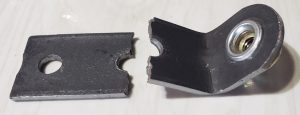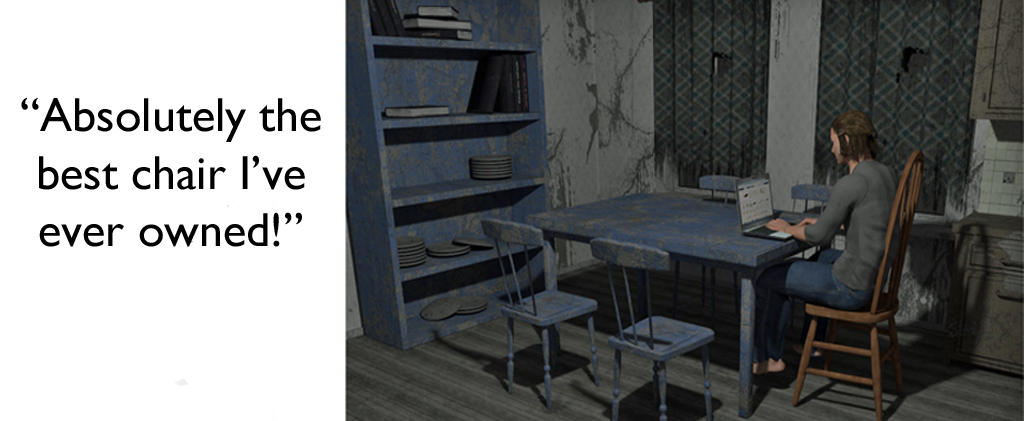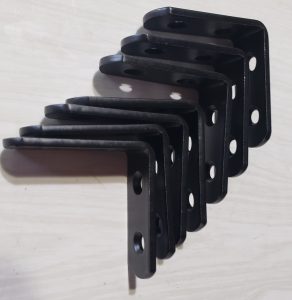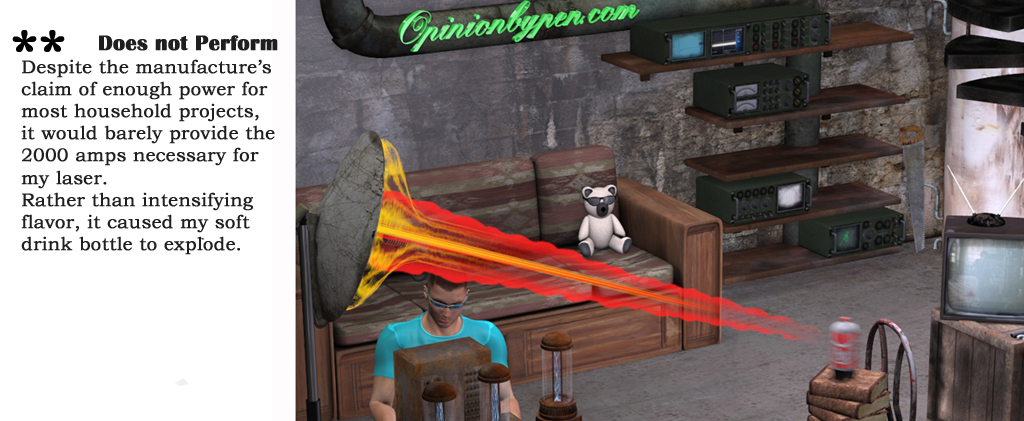 Last week the bracket securing the arm of my gaming/ current office chair broke. I’ll admit I’ve put on a few pounds during my Covid isolation and I never intended it to sub as a full-time office chair. Still, I haven’t gained that much weight and the chair was less than a year old. One armed chairs not being optimal for work, gaming or the long string of teleconferences scheduled every Monday, I started looking for a new chair.
Last week the bracket securing the arm of my gaming/ current office chair broke. I’ll admit I’ve put on a few pounds during my Covid isolation and I never intended it to sub as a full-time office chair. Still, I haven’t gained that much weight and the chair was less than a year old. One armed chairs not being optimal for work, gaming or the long string of teleconferences scheduled every Monday, I started looking for a new chair.
Buy anything from Amazon and you will be asked to provide feedback. The vendors really want you to respond and in many cases offer you incentives for your response. Good comments are essential to the vendor’s continuing business. Bad comments warn perspective buyers about drawbacks.
When I get ready to buy something, I spend a lot of time reading the reviews. Often this lets me know of issues or features I never considered in my original planning. The only problem is that I have to read a lot of bogus reviews that say nothing and a lot of reviewers that don’t know how to write a review.
One look at the failed bracket on my chair told me that this is probably a frequent failure. The bracket is a mild steel or iron with large grain structure. I could say that it appears to be two strips of metal forged together and poorly tempered but that only suggests I’ve been watching too many episodes of Forged in Fire.
Considering how soon my chair broke, it was obvious that my review process had failed me. I had ignored the warning flags of too many bland five-star reviews and ignored the comparative low price.
The Engineer in me wants to solve problems but how to approach this? I’ve already written a post on writing better reviews. A quick math check makes it clear how futile my efforts are. With millions of reviewers and maybe five people actually taking my advice, I’m not budging the needle on this.
I considered starting a new business. You know, a cadre of verified reviewers, all verified to be real people. Trained to give good through reviews. I think that’s what consumer reviews was trying to be but they ignored the power of multiple reviewers. One small problem, since Facebook and Twitter can’t distinguish between real and fake accounts, I don’t see how my company would manage.
Amazon tries to establish some credibility by showing purchase verifications but given how important reviews are, buying a few pieces of merchandise in order to show verified by your name seems like a small price.
How about using AI to weed out the bogus reviewers? Fake reviews tend to give a lot of words but never give any specific details. Not surprisingly, these are fairly easy to detect; “Fell apart after three days”, “Best chair ever”, “Destroyed my back after 30 minutes.”
With Amazon being one of the forerunners in AI, I’m surprised they don’t do a better job of using AI to clean up their reviews. Then again some of the human reviewers are no better than bots. Why bother leaving a review if your only comment is, “I hate it.” Not much intelligence there, artificial or otherwise.
I’m sure they assume everyone reading the review automatically knows how important their opinions are and heeds their dire warnings. This is problem for the engineer in me. With out details, the words have no meaning. I interpret “I love it”, the same way I interpret, “I hate it.” Both are meaningless babble with no substance to support the statement.
One additional caution about reviews. Every once in a while, you will see a number of very good detailed reviews intermixed with a number of reviews saying how bad the product is. Often the features described in both sets of reviews are identical. While you might be confused by this anomaly, it’s not that difficult to understand.
Almost all of the major Internet shopping sites allow smaller vendors to sell on their site. When identical products are listed, there’s only one product page. All comments on that product are lumped together, with no reference to the seller. This works as long as all vendors are selling the same product.
When you see this disparity in comments, it’s highly likely that one or more of these vendors is selling counterfeit products. Amazon works hard to identify these vendors but there’s a lot of money in selling shoddy copies and it’s way too easy to come up with a new business name. If you do find yourself stuck with a counterfeit item, notify Amazon immediately. It helps all of us.
Having gone through hundreds of poor reviews and a few very good reviews, I did what any good engineer would do. Realizing there wasn’t enough trusted data to select a chair, I modified the parameters of my task and decided to fix my chair. This involved ordering a heavy duty bracket that could be modified to replace my broken bracket and spares to replace the left side when it gives way.
In the end, I saved a lot of money and have a much stronger chair. Sorry Amazon, maybe I’ll replace my chair next year. Looks like my wife does have a reason to complain about the age of her appliances.
© 2021, Byron Seastrunk. All rights reserved.













I was hoping you found a legitimately comfortable one. I bought one off Amazon and regret it. It’s like stiff and hard on my back and butt (not enough butt ratio).